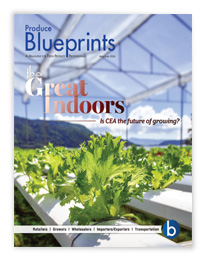Some things that look boring can turn out to be fascinating.
I’m thinking of the recently released “Fiscal Year 2021 Description of Funded Projects—2021 Farm Bill” for the Specialty Crop Block Grant Program issued by USDA’s Agricultural Research Service.
The report gives an illuminating glimpse into current concerns and future possibilities for fruits and vegetables.
A sizable amount of the $72.9 million granted for 654 projects is for familiar things:
- Evaluation and control of pest damage (“Reducing Use of Irrigation Pipes as ‘Super-Highways’ by Argentine Ants in Citrus Orchards”);
- New techniques for improving efficiency in water and nutrient use (“Mitigating Impacts of Salinity and Diseases for Sustainable Vegetable Production Under Climate Change” in Florida); and
- Support for marketing efforts ($471,000 is going to produce a ten-episode series for the PBS program America’s Heartland to promote California’s specialty crops).
Others are more topical. The California Department of Food and Agriculture (CDFA) is getting $468,000 to train growers on mitigating wildfire impacts in Sonoma County, “where fires have burned 182,049 acres since 2017.”
Some of the grants point to the prospects of new crops for certain areas: one project is aimed at “Establishing the Potential for a SE Alaska Berry Industry.” Another is dedicated to “Evaluating Native Edible Plants and Specialty Crops in Missouri.” Still another will evaluate double cropping of vegetables and strawberries in Nebraska.
 One recurring theme is promoting fruit and vegetable consumption, particularly among disadvantaged urban youth. One project promotes “school-based garden production of fruits and vegetables” among “high-need students in urban areas across New Jersey.”
One recurring theme is promoting fruit and vegetable consumption, particularly among disadvantaged urban youth. One project promotes “school-based garden production of fruits and vegetables” among “high-need students in urban areas across New Jersey.”
A $356,000 “Eating, Learning, Growing” project “advances a culturally responsive strategy to increase student knowledge and consumption of California specialty crops, especially among the 4.8 non-white students who are the majority of consumers in California’s $2.8 billion school food industry.”
I am neither a prophet nor a futurologist, so I cannot say which, if any, of these efforts will produce major long-term effects. But I think I can glimpse what may be coming here and there.



